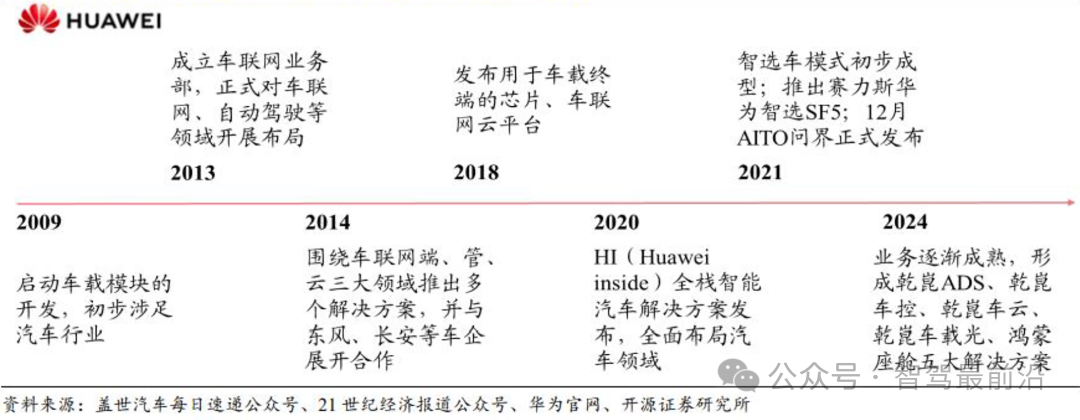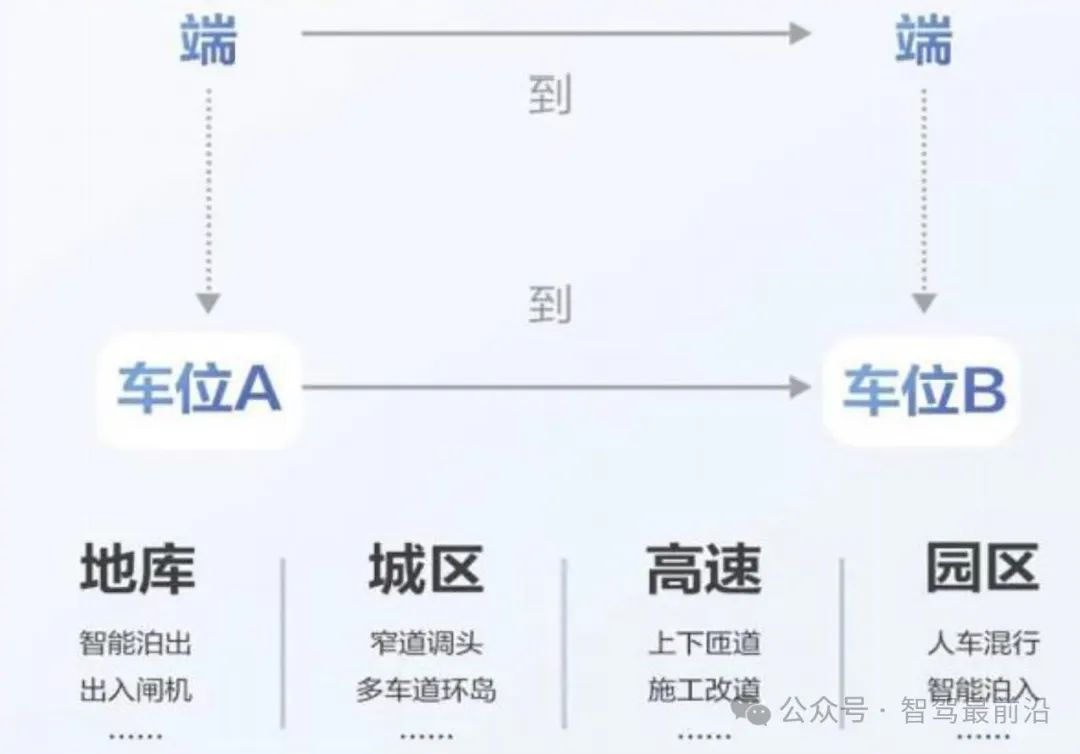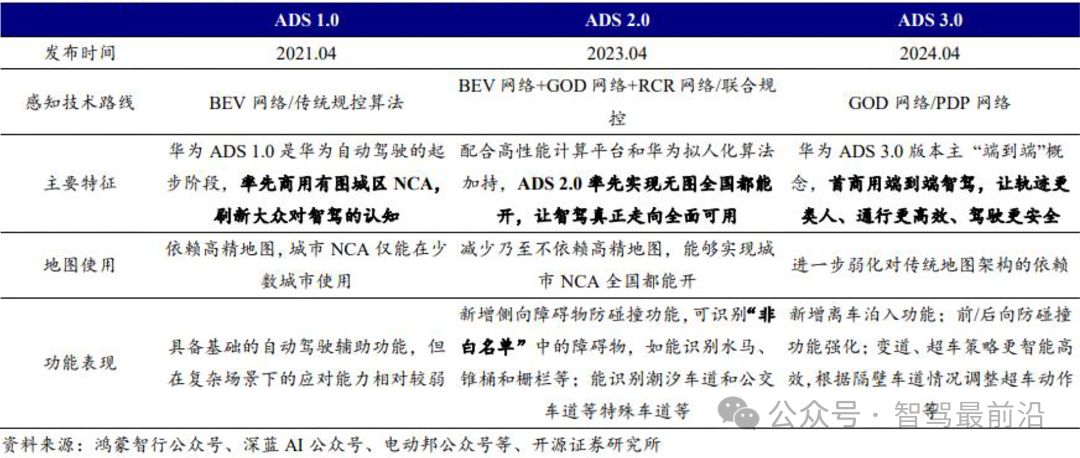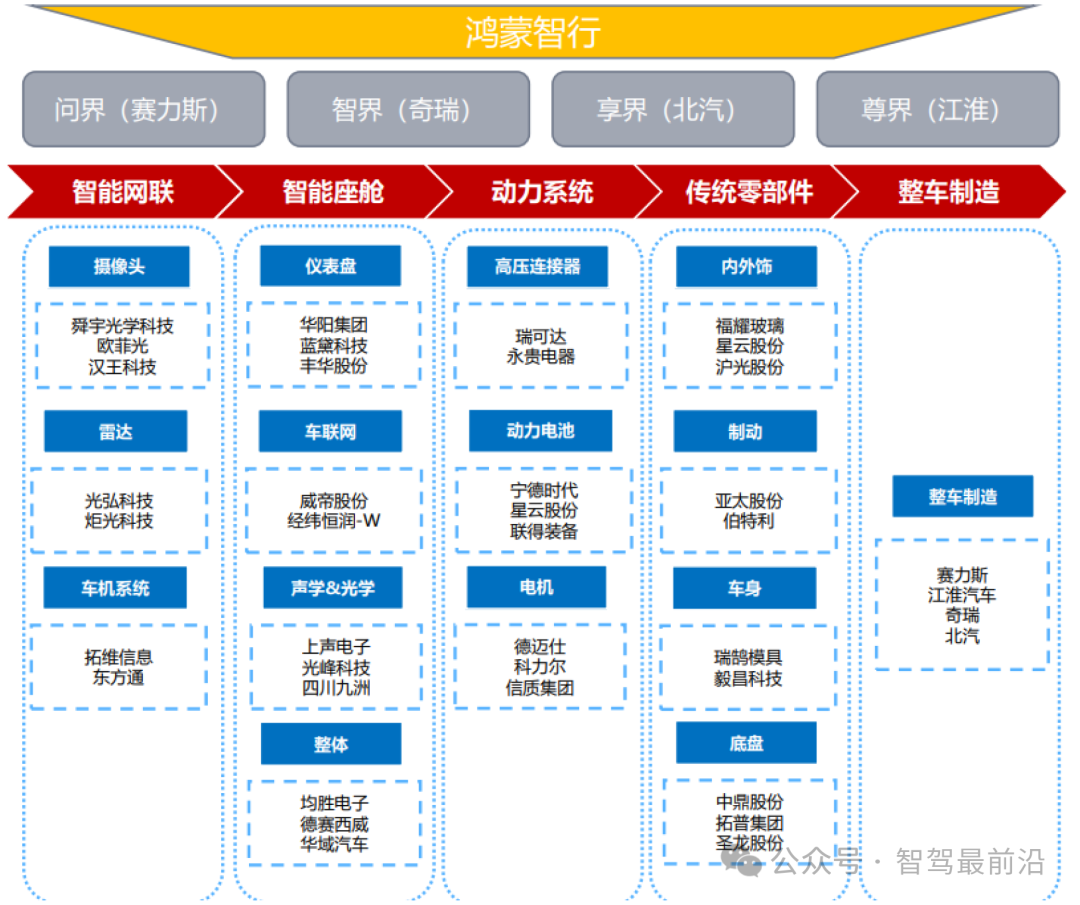Huawei's Autonomous Driving Technology: An In-Depth Look
![]() 04/23 2025
04/23 2025
![]() 558
558
Authoritative predictions suggest that by 2030, the adoption rate of L2 autonomous driving in China's passenger vehicle market will reach nearly 90%, with L3 and above installations expected to exceed 30%. Amid advancements in infrastructure such as 5G networks, vehicle-road coordination, and high-precision maps, autonomous driving technology has evolved from a conceptual stage to the brink of large-scale commercialization. In this landscape, technological prowess, ecological collaboration, and vast data resources have emerged as the linchpins of success in the intelligent driving sector. Huawei, leveraging its cross-domain expertise, is accelerating its strategic shift from "technology validation" to "large-scale deployment".
As the automotive industry embraces intelligence, Huawei, with its comprehensive R&D capabilities spanning "chip-hardware-software-cloud," has transformed from a supplier of in-vehicle communication modules to a pioneer in end-to-end intelligent driving solutions. From initiating in-vehicle module development in 2009 to the launch of the Kunlun Intelligent Driving series in 2024, Huawei has driven industry transformation through innovation, continuously pushing the boundaries of intelligent driving understanding. This journey has not only seen breakthroughs in core technologies like perception, decision-making, and computing power but has also laid a robust foundation for intelligent driving commercialization through extensive data loops in the cloud and a deeply integrated cooperative ecosystem.
Reflecting on Huawei's intelligent driving journey, the ME909T telematics module introduced in 2013 marked its first in-vehicle communication product. In 2014, Huawei established the Internet of Vehicles Laboratory and swiftly began collaborations with automakers such as Dongfeng, Audi, and BMW. In 2020, Huawei unveiled the HI (Huawei Inside) full-stack intelligent vehicle solution, encompassing five core systems: intelligent driving, intelligent cockpit, intelligent electric, intelligent connectivity, and intelligent vehicle cloud. Additionally, it launched over 30 key components, including lidar and ARHUD, signaling a new era of "technology empowerment for automakers." Since 2021, Huawei has partnered with automakers like Thalys, Chery, BAIC, and JAC, adopting a dual-track approach combining the HI mode and HarmonyOS Intelligent Driving mode. In April 2024, the Kunlun Intelligent Driving brand was officially launched alongside the "HarmonyOS Cockpit," solidifying Huawei's strategic commitment and extensive layout in the field of intelligent driving.

Huawei Intelligent Driving Layout
Huawei's automotive business encompasses three cooperation modes: standardized components mode, HI (Huawei Inside) mode, and HarmonyOS Intelligent Driving mode.
(1) Components Mode: The vehicle BU operates akin to a Tier 1 supplier in the traditional automotive supply chain, offering standardized components modules to automakers, including over 30 components such as lidar, millimeter-wave radar, cameras, motor controllers, and telematics modules.
(2) HI Mode: This full-stack solution, encompassing both software and hardware, enables automakers to fully leverage Huawei's advanced intelligent technology. Compared to the components mode, the HI mode involves deeper collaboration, particularly facilitating continuous iterative upgrades in intelligent electric, intelligent cockpit, and intelligent driving.
(3) HarmonyOS Intelligent Driving Mode: Building upon the HI mode, HarmonyOS Intelligent Driving involves Huawei's comprehensive involvement in the lifecycle of cooperative vehicle models. Leveraging Huawei's consumer sector experience, it provides technical and service support to enhance product competitiveness.
In terms of technical architecture, Huawei's Kunlun Intelligent Driving ADS 3.0 innovatively adopts an end-to-end large model, breaking free from traditional modular design constraints. Its perception end relies on the GOD (General Obstacle Detection) large perception network, which replaces the BEV segmentation network with three-dimensional model learning. This not only recognizes white-listed and irregular obstacles but also accurately perceives traffic light states and vehicle flow dynamics. On the decision-making and planning end, the PDP (Prediction, Decision, Planning) neural network seamlessly integrates prediction, decision-making, and planning, significantly enhancing traffic efficiency and comfort – reducing hard braking rates by 15%, improving smoothness by 50%, and decreasing bump amplitude by 50%. To ensure safety thresholds, ADS 3.0 introduces an instinctive safety network that can execute the shortest-path avoidance maneuver within 200 milliseconds, with a decision-making speed nearly three times faster than other end-to-end networks, providing robust safety guarantees for commercial deployment.
At the perception system level, multi-sensor fusion is crucial for achieving high robustness in Huawei's intelligent driving. Huawei deeply integrates 192-line D3 lidar with high-precision 4D millimeter-wave radar and a multi-camera system. The D3 lidar boasts a 20Hz sampling frequency, employing a VCSEL linear array and TDA4+FPGA processing solution, ensuring stable environmental detection under complex weather conditions like night, rain, and fog. The high-precision 4D millimeter-wave radar, based on a 4T4R MIMO waveguide antenna, achieves ultra-long-range detection of 280 meters (an improvement of 35%), 5cm imaging accuracy, 60° vertical field of view, and 65ms latency, providing precise three-dimensional environmental modeling for driving and parking scenarios. Furthermore, Huawei's multi-camera vision system, despite hardware reductions, maintains high-precision perception of lane lines, vehicles, pedestrians, and other targets through continuous iteration of the end-to-end large model, providing reliable input for multi-sensor data fusion.
In terms of computing power, Huawei's self-developed MDC (Mobile Data Center) mobile data center platform and Ascend series AI chips offer comprehensive hardware support for intelligent driving. The MDC platform covers L2+ to L5 autonomous driving scenarios, with product series including MDC210, MDC300F, MDC610, and MDC810, offering computing power ranging from 48TOPS to 400+TOPS. It is complemented by self-developed AOS and VOS operating systems, along with standardized interfaces and toolchains, meeting automotive-grade safety and real-time requirements. On the edge AI chip front, the Ascend 310 (16TOPS) and Ascend 610 (160TOPS@INT8, 100TFLOPS@FP16) products strike a balance between performance and power consumption. The Ascend 610, based on a 7nm process, features 24GB LPDDR4x storage and 128GB flash memory, providing solid computing power support for models like the AITO M9 to upgrade to ADS 3.0.

Huawei MDC Technology Coverage
In terms of data-driven capabilities, Huawei has constructed a dual-closed-loop training system combining "real mileage + virtual simulation." As of October 2024, Huawei's ADS intelligent driving total mileage has surpassed 736 million kilometers, with urban intelligent driving mileage exceeding 100 million kilometers. Cloud-based learning and training computing power reach 7.5 EFLOPS, with daily training data exceeding 35 million kilometers, and model iteration cycles maintained within five days. Addressing the challenge of collecting data for extreme scenarios (Corner Cases), Huawei has introduced the Pangu large model and NeRF technology to reconstruct real vehicle videos into 3D space. By editing driving trajectories, lighting, and textures, it generates diverse extreme scenarios. Combined with automatic annotation technology, this significantly improves data collection and annotation efficiency, providing a reliable guarantee for the safety and robustness of intelligent driving algorithms.
In terms of functional implementation, Huawei's Kunlun Intelligent Driving ADS 3.0 aims to create a seamless experience across all scenarios, from "parking spot to parking spot." Users can activate intelligent piloting on highways and urban roads, with the system automatically handling lane changes, obstacle avoidance, ramp entries and exits, and speed adjustments. When initiating travel from the roadside or navigating through underground garages, the vehicle seamlessly switches to intelligent parking mode based on parking spot activation, gate status, and destination changes. The CAS 3.0 omnidirectional collision avoidance system has proactively avoided 630,000 potential collisions, with forward support for braking up to 150km/h, lateral support for emergency steering to avoid obstacles, and rearward support for active braking within the range of 1km/h to 60km/h. The intelligent parking function supports immediate departure, multi-scenario, and multi-angle parking and exiting, providing users with unprecedented convenience in parking experiences.

Kunlun Intelligent Driving ADS 3.0 Enables Parking Spot to Parking Spot
To cater to diverse market and user needs, Huawei has launched a series of ADS versions. ADS 1.0 enabled NCA in mapped urban areas; ADS 2.0 broke the dependence on high-precision maps, supporting national highway and urban NOA piloting; ADS 3.0 features comprehensive upgrades in end-to-end architecture and multi-sensor fusion; and the ADS SE version, through hardware reduction and algorithm optimization, achieves high-speed NCA, urban LCC+, and other functions on vehicles priced below 200,000 yuan using a common architecture. With a subscription model of 1,000 yuan per year or 100 yuan per month, more users can experience high-level intelligent driving at a low cost, paving the way for equal access and affordability in intelligent driving.

Kunlun Intelligent Driving ADS Functional Stages
In terms of ecosystem and cooperation mode, Huawei adopts a dual-wheel drive approach combining the HI mode and HarmonyOS Intelligent Driving mode, engaging in deep cooperation with multiple automakers such as Thalys AITO, Chery Zhijie, BAIC Xiangjie, and JAC Zunjie. Under the HI mode, Huawei provides lidar, MDC computing power platforms, and ADS algorithms to partner automakers, forming close collaboration in product planning, joint marketing, and customer service. Under the HarmonyOS Intelligent Driving mode, Huawei is more deeply involved in the full lifecycle management of vehicle models, leveraging the advantages of the terminal BG in design, manufacturing, and distribution to help partner brands swiftly establish a reputation and sales volume in the mid-to-high-end market.

Huawei Automotive Industry Chain
Looking ahead, Huawei is poised to continue deepening its efforts in four key areas: cost, algorithms, computing power, and ecosystem. Leveraging large-scale production and industrial chain collaboration, the cost of lidar and millimeter-wave radar will be further reduced. Utilizing the Pangu large model and digital twin technology, Huawei will continuously enhance support for complex and extreme scenarios. By expanding the Ascend computing power platform and cloud service capabilities, Huawei aims to achieve full-process collaboration and rapid iteration from development to application. It will also continue to build an open cooperation ecosystem, collaborating with automakers, component suppliers, and governments to jointly formulate intelligent driving safety regulations and commercialization roadmaps. Driven by both technological and market forces, Huawei's Kunlun Intelligent Driving is expected to be deployed in more cities and scenarios, delivering safer, more efficient, and more comfortable intelligent travel experiences to users worldwide.
-- END --







